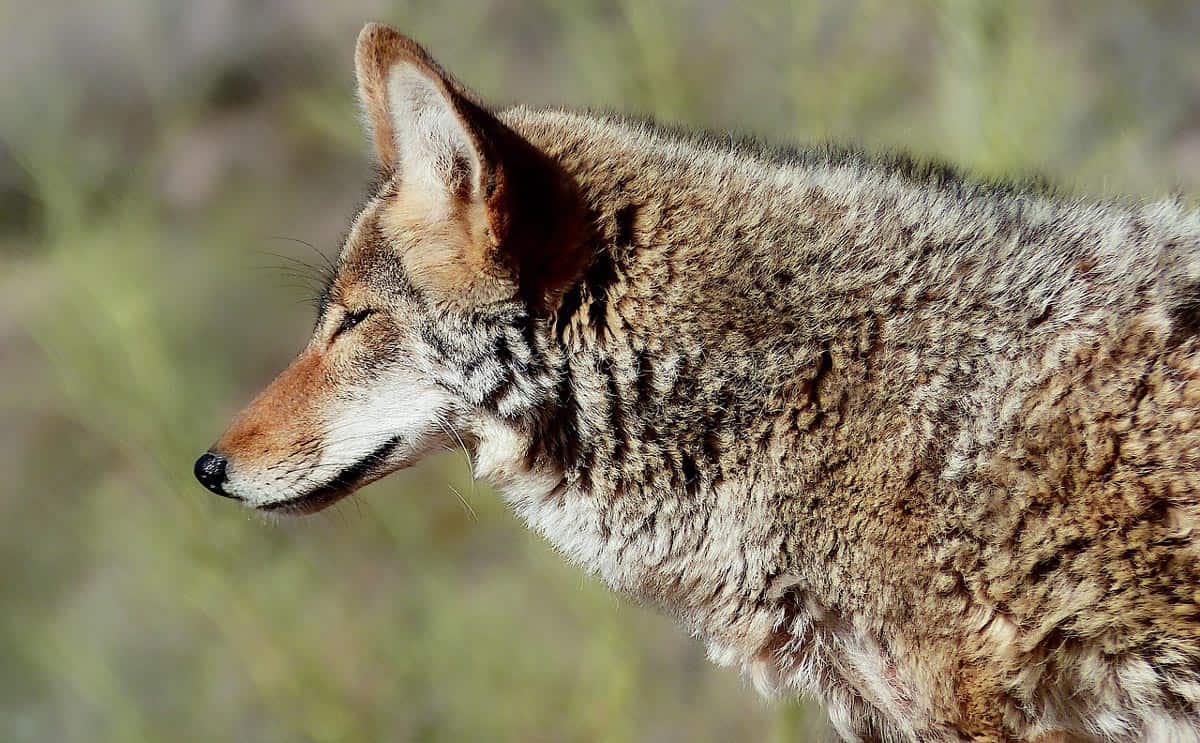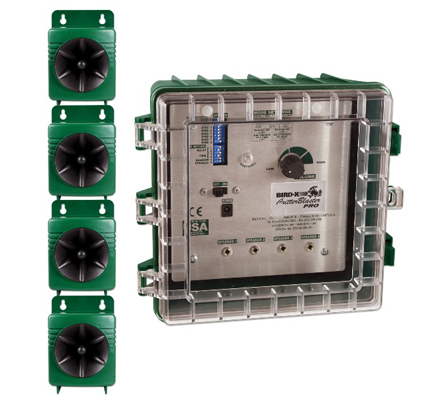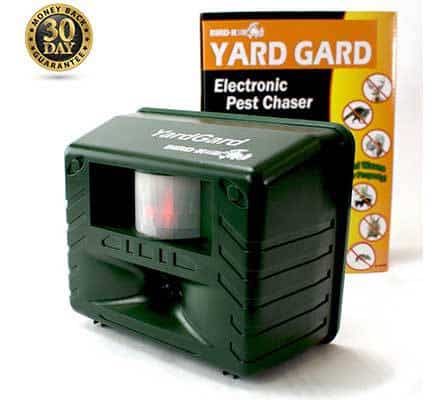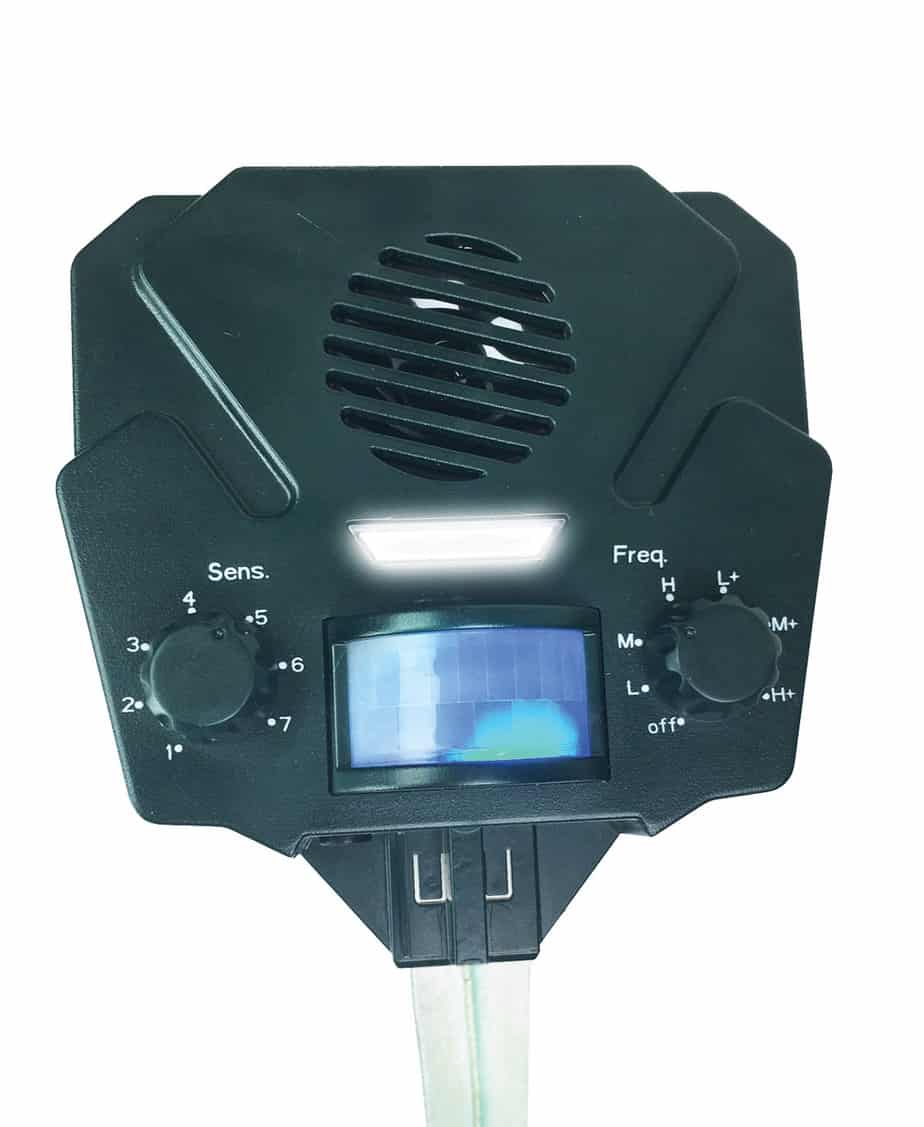Coyote Control: How Urban Coyotes Are Invading Our Cities
By Tim Gibbons, Marketing Intern for Bird-X, Inc.
A distinctively American species, the coyote has lived in North America for more than a million years. But despite widespread attempts at eradication since the early 19th-century, coyotes have adapted and are now well-established in 49 states, including most major metropolitan areas.
According to National Geographic, approximately one coyote per minute, or 500,000 per year, are killed in the U.S. every year; of this, biologists estimate that Wildlife Services aerial guns about 80,000 coyotes per year at taxpayer expense.
In recent years, coyotes have discovered a new refuge in large metropolitan areas like Chicago and New York City, where people do not trap, poison, or shoot them. This transition has had a strong impact on their longevity—wild coyotes live an average of two and a half years, whereas urban coyotes can live more than thirteen years.
“They’re doing very well living among us, dining on the rats and mice that our villages and houses produce in such abundance,” author Dan Flores said in a recent interview with National Geographic. While they prefer to feed on wild prey, these omnivores will eat almost anything—leather, backyard fruit, garbage, and even pets.
Living Amongst Coyotes
Unlike many predators that face extinction, coyotes continue to survive and thrive in the face of persecution due to their intelligence, adaptability, and resilience. While rapid deforestation and hunting has forced coyotes to seek shelter in urbanized landscapes, the National Audubon Society believes educated coexistence is a feasible solution. Coyotes are not a threat to humans, as they are usually wary of people and avoid contact when possible. Dr. Marc Bekoff, member of the Project Coyote Science Advisory Board, believes that by altering our behavior and gaining a better understanding of coyote behavior, we can cohabit peacefully.
Although coyotes have a beneficial top-down effect on the ecosystem, it is still important to discourage them and other pests from entering yards and neighborhoods. Coyotes often view cats and small dogs as prey, and may attack domestic pets that roam free. These nocturnal creatures are also known to howl in packs during the night, which can disturb nearby residents.
The Bird-X Solution
Bird-X understands that cohabitating peacefully with pest animals, like coyotes, means choosing humane pest control methods to deter them from unwanted areas. This is why Bird-X offers pest control products that are effective, safe, and eco-friendly. Using humane pest control ensures that you, your family, and your pets stay safe, while not negatively impacting the ecosystem or unnecessarily harming pest animals. Using inhumane methods like traps or poisons can endanger other animals and your family, and can result in even more mess and frustration. For coyote control around the home, Bird-X recommends humane products that use sonic and ultrasonic technology to alert pest animals to go elsewhere.
For example, the Critter Blaster PRO is a sonic pest control system designed for use in large, remote outdoor areas. This four-speaker system aggressively harasses pests with digitally recorded sonic sounds, keeping coyotes and other critters away for up to 6 acres.
Other alternative methods include the Yard Gard and Solar Yard Gard, which are both silent, ultrasonic outdoor devices that protect 3,000 to 4,000 square feet. These devices emit high-frequency sound waves that are silent to most humans but irritating to pests. Over time, pests are conditioned to avoid an area where this threat is perceived, making them seek refuge in untreated areas.
If your home or business would benefit from Bird-X’s pest control products, let us know in the comments
Sources:
- How the Most Hated Animal in America Outwitted Us All
- National Geographic, Simon Worrall
- How Wild Animals Are Hacking Life in the City
- National Geographic, Christine Dell’Amore
- Portland Audubon
- Project Coyote
Recommended Products
Shop Critter Blaster Pro
Shop Yard Gard
Shop Solar Yard Gard






